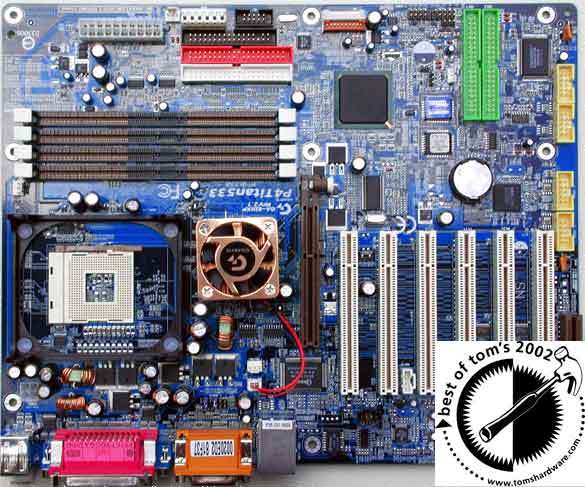Warp Speed with Rambus: Six Boards for PC1066
Conclusion: Stability And Performance For P4
It's quite astonishing what the rather outmoded Intel 850E chipset is able to deliver on performance, when used together with Rambus memory. Basically, Intel has not made significant changes to the 850E when compared to its predecessor, the 850. The only adjustments that were made were done in order to tailor it for the new Northwood core of the Pentium 4. In general, we were able to determine that, with help from 533 MHz RDRAM (PC1066), the motherboards in the test were able to squeeze out every last drop of performance from the Pentium 4. Here, there are no restrictions imposed by bandwidth, as opposed to DDR SDRAM. In the test, however, the motherboards revealed their differences: Asus, spoiled by success in the past, is no longer able to take top position, even though the Taiwanese manufacturer integrates support for 32 bit Rambus technology. This allows the Asus board to run using a single module, while the other boards only work with pairs of 16 bit modules. The clear winner of the test was Gigabyte: rich in features and high on performance, the board takes first place in most of the tests. The manufacturer prices the board at $225 for the complete package, which is not unreasonable when you consider all the features that it offers. By contrast, the Asus board is offered at about the same price, while offering a meager number of features and marginally lower performance.
The question that remains at the conclusion of the test is: what will happen to Rambus? After the events of the recent days, where the FTC sued the technology manufacturer Rambus, the future of RDRAM is more than uncertain. In light of the current situation, Intel will not further develop the 850E chipset. Still, the actual Rambus technology leaves no room for complaint: RDRAM offers a large bandwidth of up to 4.2 GB/s and offers the best performance, particularly when used together with the Intel Pentium 4. Intel's only chance to keep up with the performance level of PC1066 memory (533 MHz) is a new memory interface (chipset). Internal documents from Intel reveal that at the beginning of next year, the successor to the P4 will be launched. Codenamed "Prescott," it will integrate a dual-channel DDR interface with DDR333.
Here, you should keep in mind that the Intel Pentium 4 has a maximum bandwidth of 4.2 GB/s. In the near future, this will reach well over the 3 GHz limit. Only Rambus memory in the form of PC4200 (533 MHz) is capable of taking full advantage of this bandwidth. By using DDR SDRAM, such as DDR266 or DDR333, the bandwidth remains restricted to 2.1 GB/s and 2.7 GB/s, respectively.
In this comparison, the Tom's Hardware Guide Award goes to Gigabyte.
Get Tom's Hardware's best news and in-depth reviews, straight to your inbox.
Current page: Conclusion: Stability And Performance For P4
Prev Page Archiving: WinACE 2.11